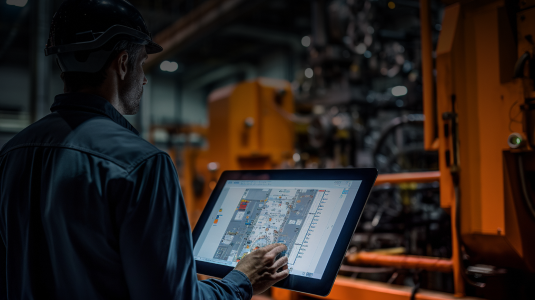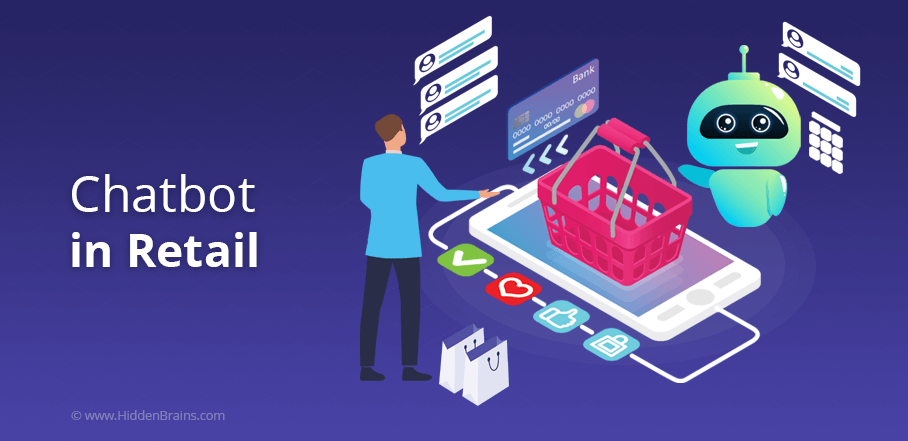Table of Contents
Consider your last online shopping knowledge. Odds would say that you were conveyed item suggestions dependent on your past buys or your preferences. Did this help your next buy and help in your purchasing choice? The fast pace of change across the retail landscape is growing at a phenomenal pace like never before. And it shows no signs of slowing down. Whether it’s going beyond customer expectations, earning customer trust, or reimaging the supply chain, retailers can benefit by adopting a fresh digital perspective and developing innovative retail IT solutions.
The Retail Apocalypse
The “Retail Apocalypse” supporters consider that the development of eCommerce will in the long run put traditional methods of retail to take the back seat. eCommerce is on the rise with worldwide eCommerce deals touching a staggering number of 2.3 trillion U.S. dollars in 2017 and anticipated to touch $4.5 trillion by 2021.
Rise of eCommerce: Biggest Technology Disruptor
Retail is not going away. Traditional retail will eventually evolve where customers learn, engage, and experience brands and products. The focus will shift to where both the digital and the physical experiences complement each other to create an improved retail experience for the consumer.
Consumers’ decisions are being extensively influenced by digital channels in a variety of locations, from in-store displays to augmented reality-equipped stores that allow the user to experience a product before purchasing.
Technology Factors Driving Consumer Decisions
- Interaction with AI-powered Digital Agents and Chatbots: Facilitate product discovery, recommendation and support.
- QR code-based Payment Solutions: Helping customers avoid long payment queues.
- Artificial Intelligence, Machine learning, and Deep Data: Helps retailers understand consumer behaviors and needs.
- Robotics and Sensors: Utilized to help optimize in-store products and design product offerings
Chatbots Development: A New Era of Growth
Chatbots are intelligent applications intended to connect with people through stages, including informing administrations, for example, Facebook Messenger, WhatsApp, Viber, and WeChat, utilizing content as a unique way of reaching out to customers or prospects. The primary motivation behind chatbots is to interact with people in a human-like way. These days, chatbots are helping clients across diverse industries and domains – right from retail to travel and web-based business, just as others. While the eCommerce industry is on the rise, each and every industry encounters turnover and change, driving its organizations to adjust their plans of action to overcome these challenges.
Retailers need to focus on creating a retail experience, where both the digital and the physical consumers’ experiences complement rather than contradict each other in creating an improved retail experience for the consumer.
To make the digital transition, forward-thinking companies have been implementing technologies that allow branding and product interaction to be intensely customizable and personalized.
How do Chatbots help the Retail Industry?
A Chatbot is a computer program designed to simulate conversation with human users, especially over the Internet, Artificial Intelligence Chatbots are able to identify the user’s intent and answer questions in a conversational human style. Chatbots are able to provide retailers with valuable tools to engage consumers, whether in-store or even before they make the purchase decision and step a foot in the store. Harnessing Conversational Artificial Intelligence, or AI-powered Chatbots, retailers will be able to provide consumers with a combined digital, personalized, and instant conversational experience.
Chatbots can provide an engaging experience to consumers along different stages of the consumer journey, and across different digital platforms such as text, email, in-app, or website.
- Answering consumers’ questions
- Real-time advice on brands and products
- Processing orders and purchases
- Accessing product and inventory updates
- In-store availability for purchases and pickup
- Providing responsive 24/7 customer service
In addition to Customer Engagement, some Conversational AI platforms, provide data and analytics regarding consumer behavior and products they engage with. This information provides valuable insights for retailers to help them understand consumers, analyze issues in their value chains or consumer journeys, and align products and content to customers’ needs.
Types of Bot Frameworks
Your retail business can build own custom chatbot or partner with a Bot framework development company helping brands to connect with their customers.
Microsoft Chatbot Framework
Microsoft Chatbot Framework comes with a modular and extensible framework. It leverages the SDK to develop templates and create bots that provide speech, question, and answer.
Wit.AI
Open and extensible natural language platform to build intelligent chatbot applications for chatting on different messaging platforms. Wit.ai learns human language from every interaction to create text or voice-based bots.
Facebook Bot
The Messenger Platform allows organizations to build rich and personalized experiences in Messenger to add controls and improve the user experience in the bots to implement business logic.
IBM Watson
Watson offers data discovery, automated predictive analytics, and cognitive capabilities such as natural language dialogue to create a chatbot that can interact with data conversationally to understand categories such as keywords and semantic roles.
Dialogflow
Dialogflow – an end-to-end development suite to build conversational interfaces for websites, mobile applications, messaging platforms and IoT devices.
Chatfuel
Chatfuel allows users to build bots on Facebook Messenger without coding. With Chatfuel development, businesses can experience higher engagement and retention rates.
Chatbot Benefits
Engaging Customer Service & Building Brand
Chatbots come across as one of the most effective ways to enhance and augment your brand when they’re feature-rich and provide services that align with their needs from your brand either in-store or online. And bots allow brands to provide unified, unparalleled customer service because the chatbot responses can be controlled.
Lower Costs
People prefer to get information about the brands while they’re shopping. A chatbot is an interactive way to obtain product or service descriptions and FAQs. It cuts down the shopping time and allows you to enhance your ROI, keeping your costs low.
Quick Responses
Keeping your customers on your site by answering their questions immediately lowers the chance that users will abandon your site to seek answers to their queries — therefore increasing the ability to increase conversions from the site.
Chatbot in the Retail Industry: A Caveat
Though chatbots showcase a powerhouse of innovation, they are still an emerging technology. It is important to tactically use chatbots to outshine your competitors. However, it is important to understand at this stage they cannot completely replace your helpdesk and staff. Overall they are useful and you should definitely move forward to include them in your innovation strategy.










































